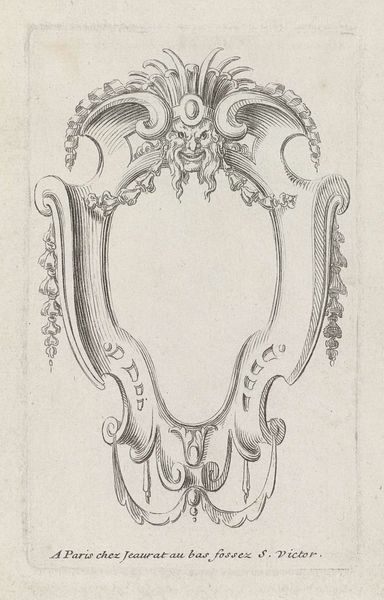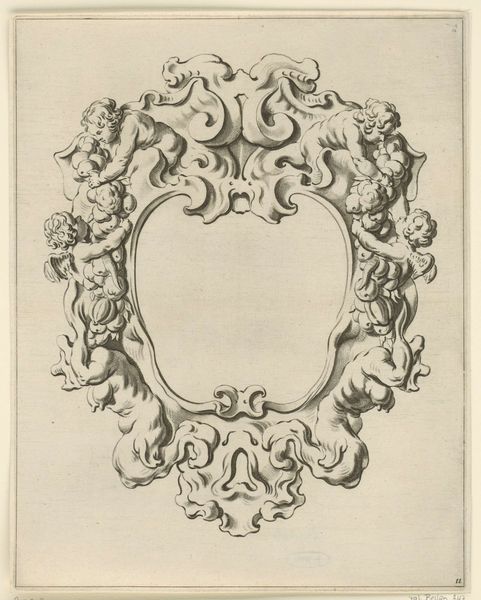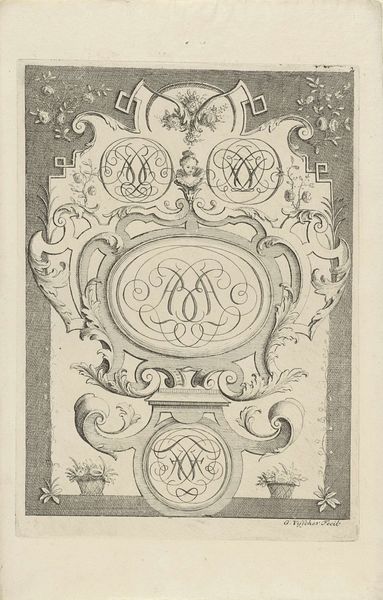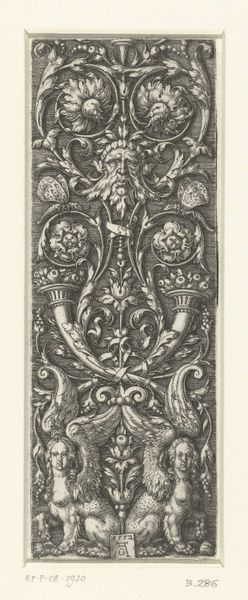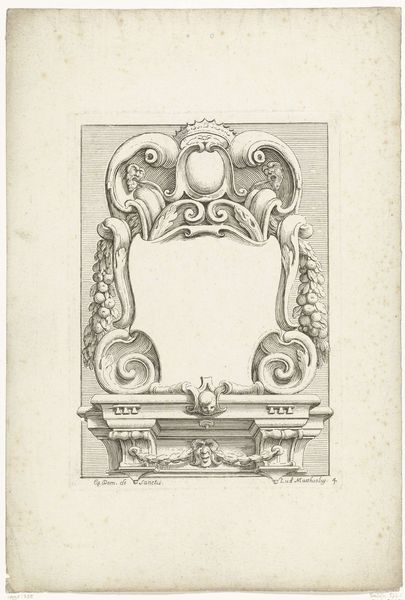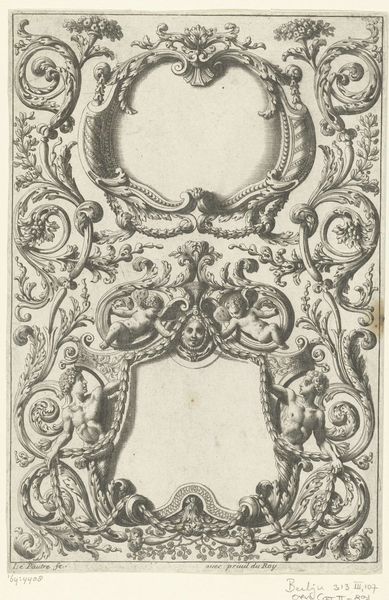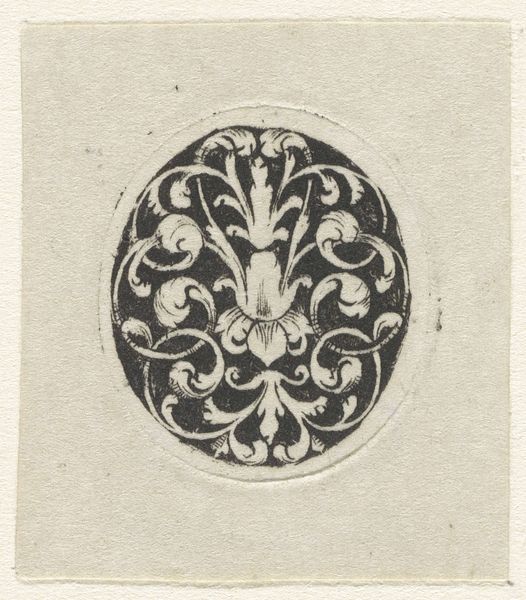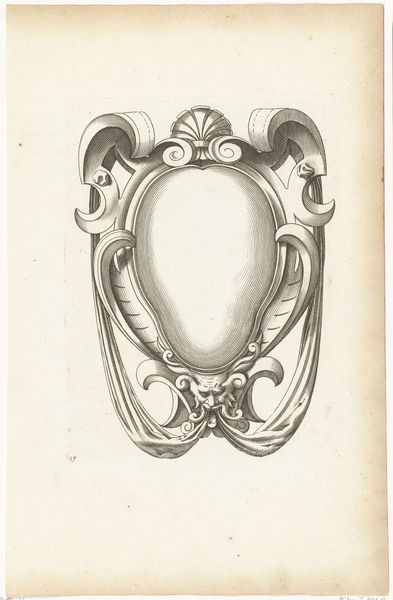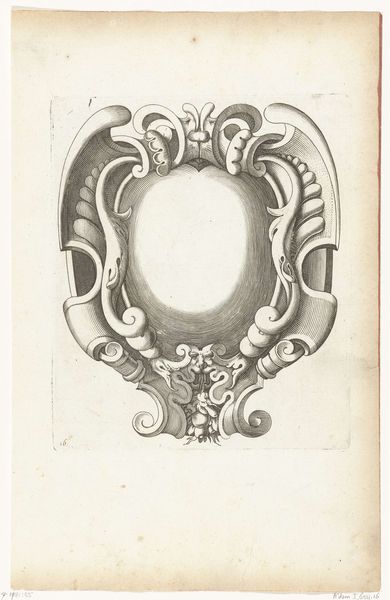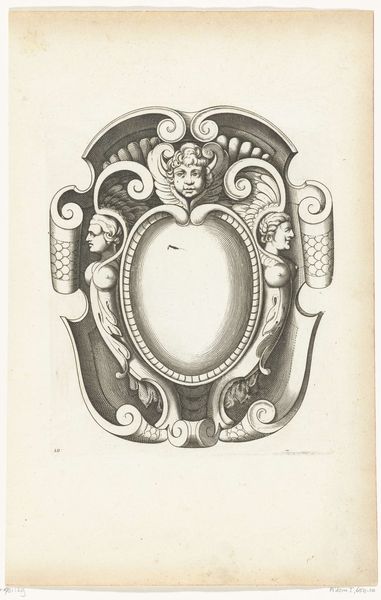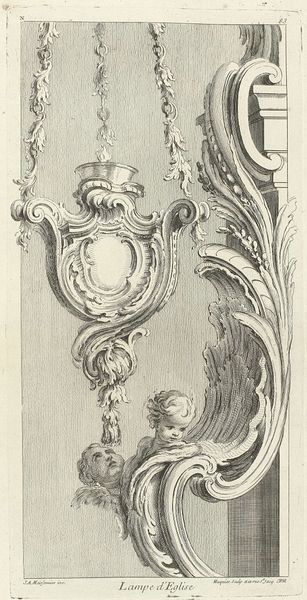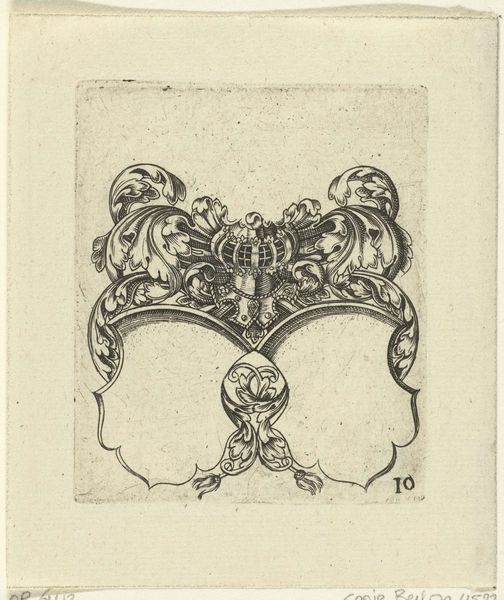
Dimensions: height 230 mm, width 176 mm
Copyright: Rijks Museum: Open Domain
Editor: Here we have Jacob Lutma’s “Cartouche met schedel,” or “Cartouche with Skull,” an engraving from around 1654 to 1678. The swirling, ornate frame immediately catches the eye, but the skull is what gives the piece its… well, sobering punch. What are your thoughts on this work? Curator: I see a fascinating intersection of class and mortality expressed through the very materials and processes used to create this print. Engraving, as a medium, democratized image production, making art accessible beyond the elite who could afford paintings. However, the vanitas theme, symbolized by the skull, served as a reminder of death’s universality, regardless of social standing. Editor: So, the engraving process itself brings the message to more people, kind of leveling the playing field, right? Curator: Precisely! The intricate details achieved through engraving – look at the varying line weights creating depth – reflect highly skilled labor. Lutma isn't just creating an image; he's showcasing his mastery of a craft. And, of course, we have to consider where this print would have existed – likely reproduced and used across society to point to death’s approach, irrespective of one’s background. What I find compelling is how a symbol of death enters the home and shapes collective consciousness. Editor: It's like the means of production reinforces the message… That’s really powerful. I hadn't considered that. Curator: Exactly. And beyond Lutma’s creation, each print demands paper, ink, the printing press – many elements produced via often invisible labor, creating a new understanding of art production beyond "the artist's touch". Think about who would buy this, how much it might have cost, what kind of space would hold it? Editor: So it’s more than just a memento mori; it’s a cultural object embedded in a whole web of materials, labor, and exchange. It completely transforms how I see the image. Thanks! Curator: Indeed. Looking at the materiality of art brings forth the forces of production and its broader consumption, challenging our assumptions around creative genius.
Comments
No comments
Be the first to comment and join the conversation on the ultimate creative platform.

